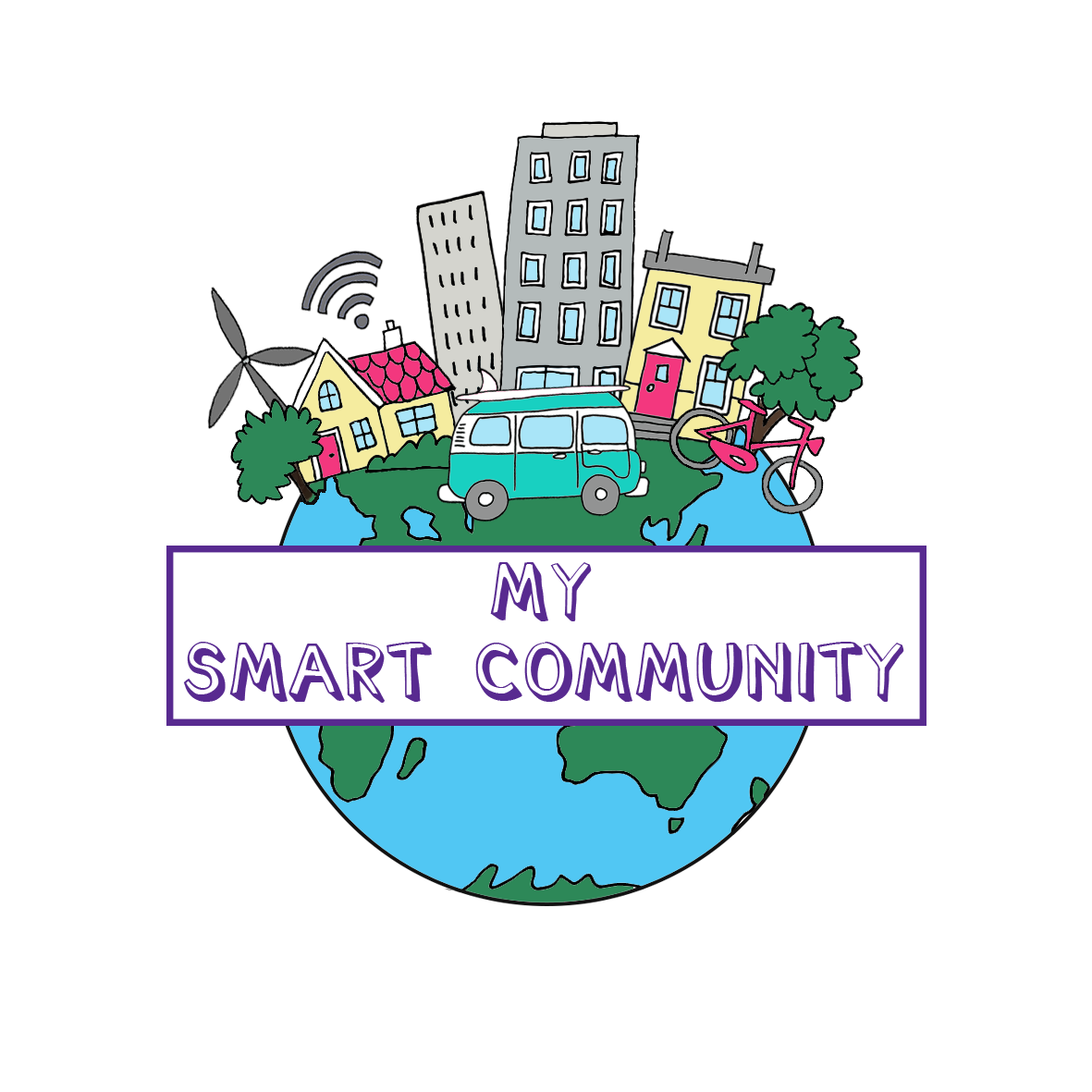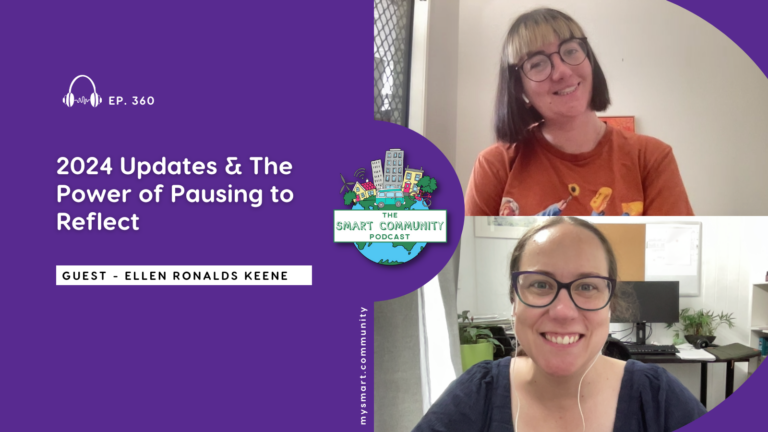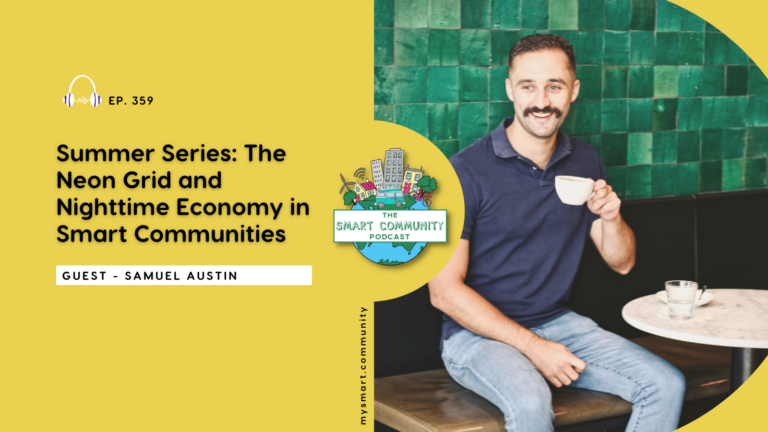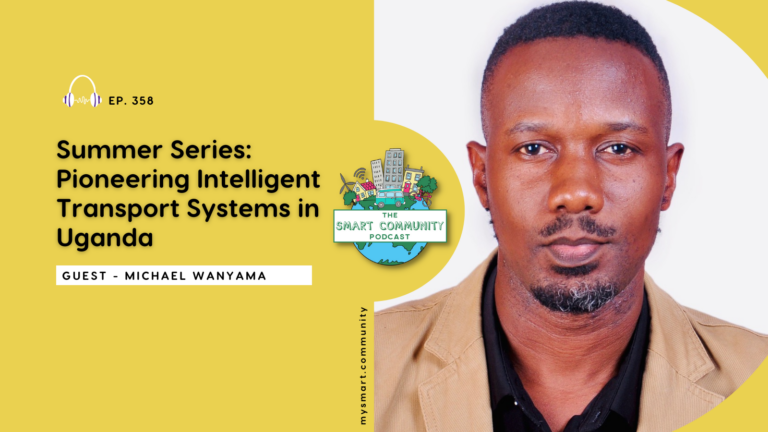In this episode of the Smart Community Podcast, Zoe has an interesting conversation with traffic engineer and transport planner, Kylie Nixon. Kylie is the Vice President of PedBikeTrans – the Pedestrian and Bicycle Transport Institute of Australasia and an Associate in Transport Planning at Arup, and in this episode she shares her passion for active transport and integrating it into our Smart communities. Zoe and Kylie discuss what walking might look like in an autonomous vehicle world, and the need for planning, technology and infrastructure that facilitates accessibility and walkability. Kylie shares some of the projects she’s currently working on, including PedBikeTrans and Whole Journey Guide for Accessible Public Transport, and what she’s learned about integrating across disciplines, government and industry. They finish the chat discussing what all this transport technology means for our health and wellbeing, and why it’s an emerging trend we should be talking about more. As always, we hope you enjoy listening to this episode as much as we enjoyed making it.
Listen here:
What we cover in this episode:
- Kylie’s background in engineering and planning, and what sparked her interest in Smart Communities
- What a Smart Community means to Kylie and why she believes it’s important
- Active Transport in an Autonomous Vehicle World
- The gap between the tech companies’ and manufacturers’ views and the planners view of how we shape the future of our places
- How and why we need to keep Active Transport as a key part of Smart Mobility and Mobility as a Service
- The importance of good planning and infrastructure for facilitating walkability and accessibility
- Kylie’s work with PedBikeTrans and some other projects she’s currently involved in
- What those projects have taught her about better integrating across different disciplines, governments and industries
- The emerging trend of the impact of technology on our health and wellbeing
- The need to communicate more with the broader community about results of trials and the processes behind decision making
- The emerging trend of monitoring and using data for reflection, evaluation and evidence-based decision making
Quotes:
“We have a role as urban planners, engineers, and designers in this space to make sure we keep bringing everybody back to [talking about] what does it mean for our communities when this [autonomous vehicle] technology comes on board? It’s about positioning our designs, our infrastructure, this technology so we actually do get that best outcome and we aren’t creating the environment that all the images show of sexy people in connected pods and nobody walking. There are other impacts as a result of that—health and wellbeing, and missing that social interaction that walking and cycling achieve.”
“Walking should still be the first choice: [your feet are] the original autonomous vehicle!”
“[On active transport in an an autonomous vehicle world] You still need great infrastructure for walking and cycling. We still need to ensure that we’re connecting the places people like to go to, ensuring we haven’t got missing links, ensuring that it’s easy to navigate…The right infrastructure has a very strong role in encouraging people to continue walking and cycling, to get out and give it a go.”
“A decent sized path, particularly when you’re considering families—we’re designing for all ages and all abilities, and that goes both for walking and for cycling. If you’re walking with a family and kids, a narrow footpath doesn’t cut it, and it doesn’t allow you to have those conversations and that social interaction that you want to be encouraging whilst you’re walking. Infrastructure plays a key part of continuing people to walk or cycle and technology’s role in that space is just to top and tail it.”
“We do need to stop working in silos, we do need to keep an open mind, and listening is certainly key…there will be boundaries and challenges that may not be able to be fully resolved, and listening and understanding that is key to integration, to [getting] the best outcome.”
“If we keep prioritising vehicular traffic over walking and cycling, other than the immediate frustration of ‘here we go again’, [the result is that] a piece of infrastructure is built and we haven’t delivered upon the connectedness and safety that we harp on about.”
“We can use the digital tools that we have to make use of that human connection.” ~ Zoe
Links:
PedBikeTrans Events including the notes from the 2018 event with Dale Bracewell, Manager of Transportation Planning for the City of Vancouver
The Whole Journey Guide for Accessible Public Transport
Walk21 Conference in Hong Kong
Wall-E example of humans in connected pods
Connect:
Find the full show notes at: www.mysmart.community
Connect with Kylie on LinkedIn and find PedBikeTrans on Facebook and Twitter
Connect with me via email: hello@mysmart.community
Connect with My Smart Community via LinkedIn or Twitter and watch on YouTube
Podcast Production by Perk Digital






0 Comments